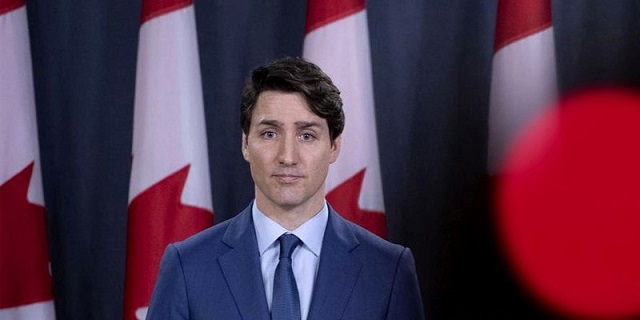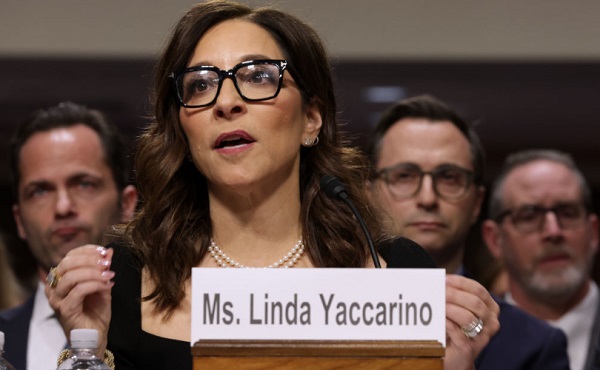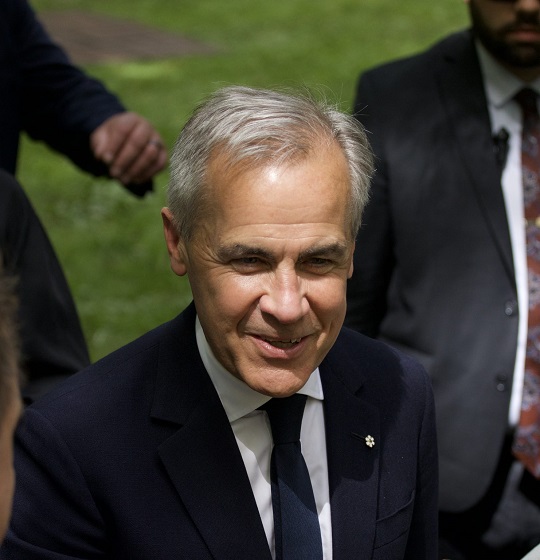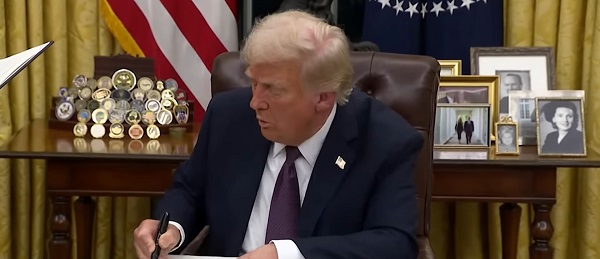Business
Prime minister rejects ‘austerity’ despite massive debt and dismal economic growth

From the Fraser Institute
By Grady Munro and Jake Fuss
Adjusting for population growth and inflation, the Trudeau government has recorded the five-highest years (2018-2022) of per-person spending in Canadian history, and is on track to record a sixth.
This week, at the Liberal cabinet retreat in Montreal, Prime Minister Justin Trudeau told reporters he’s against “austerity and cuts” and believes his government must “invest” to “create greater growth” in the economy, thus dashing hopes for any meaningful spending restraint in the upcoming federal budget.
But evidence shows the government’s current plan has not helped the economy despite the prime minister’s claims. Rather than double-down on a failed strategy of higher spending, taxes and borrowing, the Trudeau government should change direction immediately.
Let’s look at the evidence.
According to its latest fiscal projections, the federal government will spend $449.8 billion on programs and services in 2023/24—up 75.5 per cent (nominally) from 2014/15 when program spending was $256.2 billion. Adjusting for population growth and inflation, the Trudeau government has recorded the five-highest years (2018-2022) of per-person spending in Canadian history, and is on track to record a sixth. But have we seen a corresponding increase in economic growth?
No, in fact Canada has experienced an economic growth crisis for the last decade.
One of the best ways to measure economic growth is to use inflation-adjusted per-person gross domestic product (GDP), which provides the broadest measure of living standards for Canadians. According to a recent study by Philip Cross, former chief economic analyst at Statistics Canada, between 2013 and 2022 Canada’s per-person GDP (inflation-adjusted) grew at its slowest pace since the 1930s. Moreover, economic growth in Canada has fallen well behind growth in the United States, showing that Canada’s stagnation was not inevitable.
And there’s little room for optimism. According to OECD estimates, Canada will have the slowest growth in per-person GDP among advanced economies from 2020 to 2030 and 2030 to 2060.
Simply put, the data show that increased government spending has not produced greater prosperity for Canadians.
Indeed, rather than “invest” in Canadians, the Trudeau government has burdened Canadians with mountains of debt. The Trudeau government has yet to balance the budget, despite campaign promises, and this year will likely run its ninth consecutive deficit. Nearly a decade of uninterrupted deficits has increased the federal debt by $941.9 billion. This not only imposes costs on Canadians today—primarily through higher debt interest costs—but also increases the tax burden on future generations who are ultimately responsible for paying off today’s debt.
If the Trudeau government needs a blueprint for reform, it can find it within its own party, which has a history of spending reductions and strong economic growth.
During the mid-1990s, the Chrétien Liberal government introduced meaningful spending reductions that ultimately balanced the federal budget in 1997, marking the first federal budget surplus in nearly 30 years. In addition to spending reductions, the Chrétien government also introduced tax relief and other growth-enhancing policies. And the results were immediate.
Between 1997 and 2007, Canada’s average annual increase in per-person GDP (inflation-adjusted) was 2.2 per cent, which was higher than the OECD average. During the same time period, Canada’s average rate of employment growth was nearly double the average in the OECD and the United States. And the national poverty rate fell from 7.8 per cent in 1996 to 4.9 per cent in 2004. Overall, the Canadian economy outperformed many other industrialized economies during this time and living standards improved for Canadians—despite reductions in government spending.
Despite claims by Prime Minister Trudeau, less government spending (not more) is necessary to help reverse the trend of stagnant economic growth. The Trudeau government should recognize that the current plan isn’t working and change course in its upcoming budget.
Authors:
Business
WEF-linked Linda Yaccarino to step down as CEO of X

From LifeSiteNews
Yaccarino had raised concerns among conservatives and free speech advocates for previously serving as chairwoman of a World Economic Forum taskforce and promoting DEI and the COVID shots.
X CEO, Linda Yaccarino, announced today that she is departing from her position at the social media giant.
“After two incredible years, I’ve decided to step down as CEO of 𝕏,” wrote Yaccarino on X.
“When Elon Musk and I first spoke of his vision for X, I knew it would be the opportunity of a lifetime to carry out the extraordinary mission of this company,” she continued. “I’m immensely grateful to him for entrusting me with the responsibility of protecting free speech, turning the company around, and transforming X into the Everything App.”
“I’m incredibly proud of the X team – the historic business turn around we have accomplished together has been nothing short of remarkable,” she said.
After two incredible years, I’ve decided to step down as CEO of 𝕏.
When @elonmusk and I first spoke of his vision for X, I knew it would be the opportunity of a lifetime to carry out the extraordinary mission of this company. I’m immensely grateful to him for entrusting me…
— Linda Yaccarino (@lindayaX) July 9, 2025
Musk hired Yaccarino in May 2023, seven months after his $44 billion purchase of the tech company, then known as “Twitter.”
At the time, Musk’s choice to take the helm at his newly acquired company raised eyebrows among conservative observers who had earlier rejoiced at the tech mogul’s intent to rescue free speech on the internet but now were troubled about the credentials of the digital platform’s new head.
Their concerns were not without good reason.
Yaccarino had previously served as chairwoman of the World Economic Forum’s “future of work” taskforce and sat on the globalist group’s “steering committee” for “media, entertainment, and culture industry.”
She had also boasted about her role as an early cheerleader for the untested COVID-19 jab.
As 2021–2022 Ad Council Chair, she “partnered with the business community, the White House, and government agencies to create a COVID-19 vaccination campaign, featuring Pope Francis and reaching over 200 million Americans,” according to her biography page at NBCUniversal, where she had been president before being lured to Twitter by Musk.
While at NBCUniversal, she also pushed discriminatory, equity-based hiring practices, based on “diversity” characteristics such as gender and race.
“At NBCU, she uses the power of media to advance equity and helps to launch DEI [Diversity, Equity, Inclusion]-focused initiatives,” recounted her online biography.
For the most part, over the last two years, Yaccarino’s performance at X allayed suspicions free speech activists at first harbored.
“Honestly, I was worried when she was hired but she didn’t burn down the house,” quipped popular conservative X account, @amuse.
Mike Benz, who serves as executive director of the Foundation For Freedom Online, a free speech watchdog organization dedicated to restoring the promise of a free and open internet, was far more effusive in his praise of Yaccarino.
“Linda stood up and fought for free speech during arguably its most acute crisis moment in world history when we were almost on the brink of losing it,” said Benz in an X post. “She stepped up for all of us in the face of what seemed like insurmountable pressure from governments, advertisers, boycotters, banking institutions, and astroturfed lynch mobs.”
Automotive
Federal government should swiftly axe foolish EV mandate

From the Fraser Institute
Two recent events exemplify the fundamental irrationality that is Canada’s electric vehicle (EV) policy.
First, the Carney government re-committed to Justin Trudeau’s EV transition mandate that by 2035 all (that’s 100 per cent) of new car sales in Canada consist of “zero emission vehicles” including battery EVs, plug-in hybrid EVs and fuel-cell powered vehicles (which are virtually non-existent in today’s market). This policy has been a foolish idea since inception. The mass of car-buyers in Canada showed little desire to buy them in 2022, when the government announced the plan, and they still don’t want them.
Second, President Trump’s “Big Beautiful” budget bill has slashed taxpayer subsidies for buying new and used EVs, ended federal support for EV charging stations, and limited the ability of states to use fuel standards to force EVs onto the sales lot. Of course, Canada should not craft policy to simply match U.S. policy, but in light of policy changes south of the border Canadian policymakers would be wise to give their own EV policies a rethink.
And in this case, a rethink—that is, scrapping Ottawa’s mandate—would only benefit most Canadians. Indeed, most Canadians disapprove of the mandate; most do not want to buy EVs; most can’t afford to buy EVs (which are more expensive than traditional internal combustion vehicles and more expensive to insure and repair); and if they do manage to swing the cost of an EV, most will likely find it difficult to find public charging stations.
Also, consider this. Globally, the mining sector likely lacks the ability to keep up with the supply of metals needed to produce EVs and satisfy government mandates like we have in Canada, potentially further driving up production costs and ultimately sticker prices.
Finally, if you’re worried about losing the climate and environmental benefits of an EV transition, you should, well, not worry that much. The benefits of vehicle electrification for climate/environmental risk reduction have been oversold. In some circumstances EVs can help reduce GHG emissions—in others, they can make them worse. It depends on the fuel used to generate electricity used to charge them. And EVs have environmental negatives of their own—their fancy tires cause a lot of fine particulate pollution, one of the more harmful types of air pollution that can affect our health. And when they burst into flames (which they do with disturbing regularity) they spew toxic metals and plastics into the air with abandon.
So, to sum up in point form. Prime Minister Carney’s government has re-upped its commitment to the Trudeau-era 2035 EV mandate even while Canadians have shown for years that most don’t want to buy them. EVs don’t provide meaningful environmental benefits. They represent the worst of public policy (picking winning or losing technologies in mass markets). They are unjust (tax-robbing people who can’t afford them to subsidize those who can). And taxpayer-funded “investments” in EVs and EV-battery technology will likely be wasted in light of the diminishing U.S. market for Canadian EV tech.
If ever there was a policy so justifiably axed on its failed merits, it’s Ottawa’s EV mandate. Hopefully, the pragmatists we’ve heard much about since Carney’s election victory will acknowledge EV reality.
-

 MAiD2 days ago
MAiD2 days agoCanada’s euthanasia regime is already killing the disabled. It’s about to get worse
-

 Daily Caller16 hours ago
Daily Caller16 hours agoUSAID Quietly Sent Thousands Of Viruses To Chinese Military-Linked Biolab
-

 Alberta12 hours ago
Alberta12 hours ago‘Far too serious for such uninformed, careless journalism’: Complaint filed against Globe and Mail article challenging Alberta’s gender surgery law
-

 Censorship Industrial Complex23 hours ago
Censorship Industrial Complex23 hours agoCanadian pro-freedom group sounds alarm over Liberal plans to revive internet censorship bill
-

 Fraser Institute1 day ago
Fraser Institute1 day agoBefore Trudeau average annual immigration was 617,800. Under Trudeau number skyrocketted to 1.4 million from 2016 to 2024
-

 International2 days ago
International2 days agoChicago suburb purchases childhood home of Pope Leo XIV
-

 Daily Caller2 days ago
Daily Caller2 days ago‘I Know How These People Operate’: Fmr CIA Officer Calls BS On FBI’s New Epstein Intel
-

 Economy1 day ago
Economy1 day agoThe stars are aligning for a new pipeline to the West Coast




